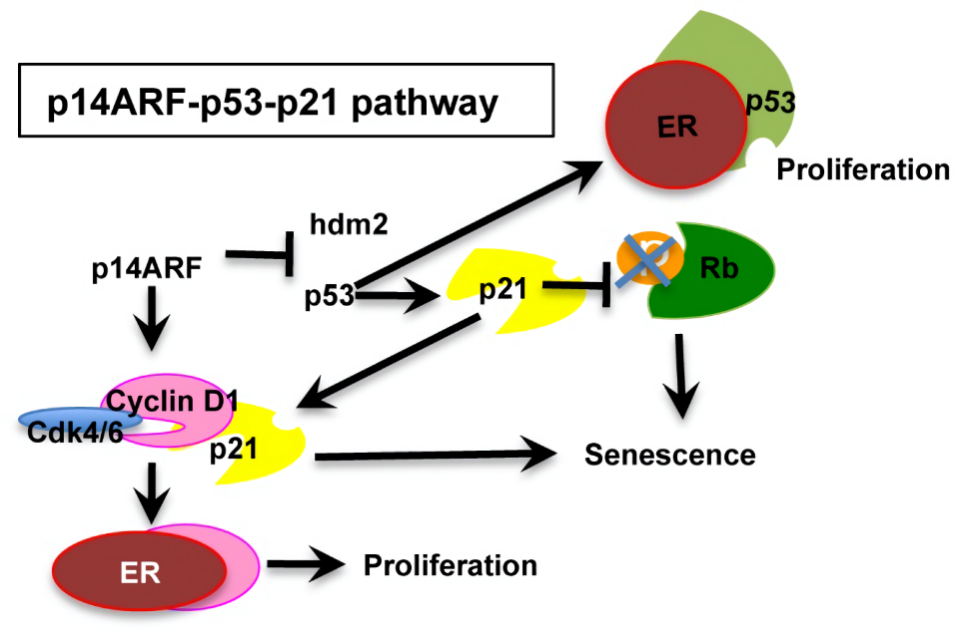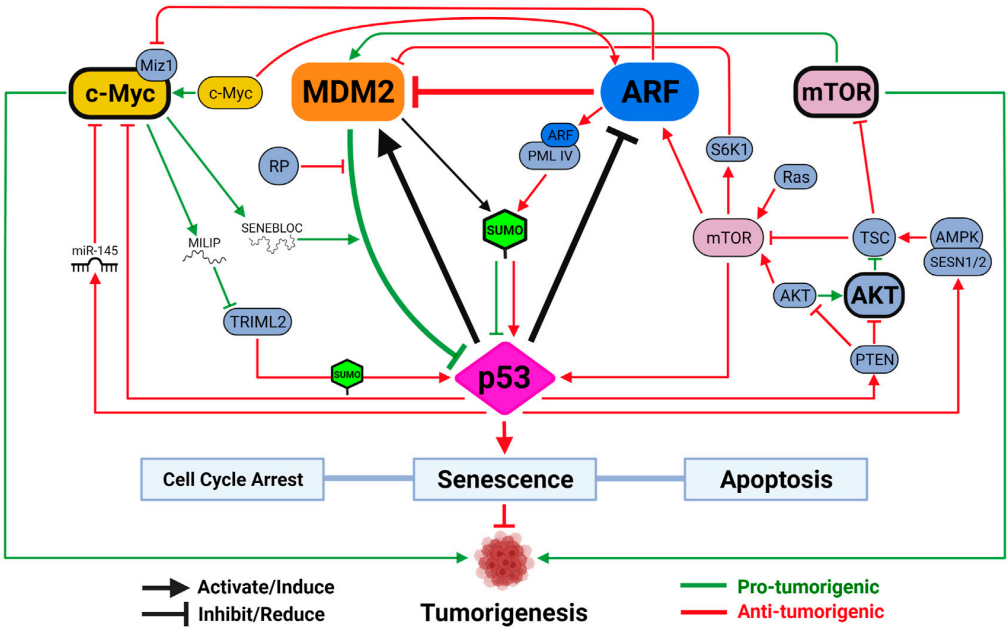Creative Biolabs is one of the well-recognized experts who are professional in the customized antibody generation and development. Especially, we offer high-quality in vitro diagnostic (IVD) antibody development services targeting the p12ARF marker of ovarian cancer.
ARF Tumor Suppressor (p14ARF)
ARF tumor suppressor (p14ARF) is an alternate reading frame protein product of the CDKN2A locus (i.e. INK4a/ARF locus). Its gene locus is located on the short arm of chromosome 9 in humans. The mRNA of INK4a and p14ARF are comprised of three exons and they share exons 2 and 3. However, despite the overlapping coding regions, they have the unrelated amino acid and distinct functions. Based on the MDM2/p53 mechanism, the induction of p14ARF is considered to be of primary importance in response to oncogenic signals. Moreover, low levels of p14ARF present highly important in terms of keeping cell growth in interphase cells.
P14ARF-MDM2-p53 Pathway
P14ARF-MDM2-p53 pathway (p53 pathway) is the important mechanism in the development of human malignancies including ovarian cancer. The p53 protein is the key transcriptional factor for the regulation of cellular homeostasis. The binding of the MDM2 protein to p53 protein inhibits its ability to activate transcription by concealing the p53 activation domain and promoting degradation of p53 through the ubiquitin-proteasome pathway. Some studies have shown that p14ARF is an upstream regulator of p53 by interacting with MDM2 and thus avoid the MDM2-induced transactivational silencing and degradation of p53. Furthermore, p53 downregulates the expression of p14ARF. In this case, p14ARF, MDM2, and p53 establish an autoregulatory feedback loop.
 Fig.1 Flow diagram of the P14ARF-MDM2-p53 pathway.1
Fig.1 Flow diagram of the P14ARF-MDM2-p53 pathway.1
p14ARF Marker of Ovarian Cancer
High-grade serous ovarian carcinoma (HGSOC) is the most lethal gynecological cancer in the world. P14ARF-MDM2-p53 pathway plays an important role in cellular homeostasis. However, the genetic mutations and aggregation of p53 protein may be responsible for impairing the normal transcriptional activation and proapoptotic functions of p53. It has been reported that p53 protein aggregation is associated with p53 inactivation and platinum resistance in HGSOC cancer cells. In addition, the overexpression of p14ARF inhibits MDM2-mediated p53 degradation and promotes the formation of p53 aggregates. Thus, the p53 aggregation can be suppressed via the inhibition of p14ARF. As high levels of p14ARF can be detected in OCSCs and lead to p53 accumulation, p14ARF have been served as a high-efficiency biomarker for the diagnosis of ovarian cancer.
 Fig.2 The functional triangle between p53, MDM2 and ARF in tumorigenesis.2
Fig.2 The functional triangle between p53, MDM2 and ARF in tumorigenesis.2
IVD Antibody Development Services Targeting p14ARF Marker
Antibodies are core elements for antibody-based immunoassays for detecting and quantifying antigens of interest in all kinds of samples such as serum, urine, and tissue preparations. With advanced technology and years of experience, Creative Biolabs has launched a whole series of p14ARF-specific antibody development services for the diagnosis and prognosis of ovarian cancer. Additionally, Creative Biolabs also provides diagnostic immunoassay development services targeting this marker. We offer one-stop services from antibody generation to kit production. If you are interested in our services, please feel free to contact us for more details.
References
- McGowan, Eileen M., et al. "p14ARF post-transcriptional regulation of nuclear cyclin D1 in MCF-7 breast cancer cells: discrimination between a good and bad prognosis?." (2012): e42246. Distributed under Open Access license CC BY 4.0, without modification.
- Kung, Che-Pei, and Jason D. Weber. "It’s getting complicated—a fresh look at p53-MDM2-ARF triangle in tumorigenesis and cancer therapy." Frontiers in cell and developmental biology 10 (2022): 818744. Distributed under Open Access license CC BY 4.0, without modification.
For Research Use Only.

